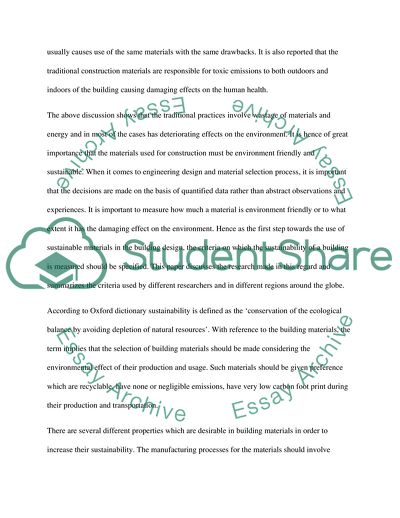Cite this document
(Assessing the Sustainability of Building Materials Essay Example | Topics and Well Written Essays - 2750 words, n.d.)
Assessing the Sustainability of Building Materials Essay Example | Topics and Well Written Essays - 2750 words. https://studentshare.org/architecture/1754079-which-criteria-might-be-most-appropriate-for-assessing-the-sustainability-of-building-materials
Assessing the Sustainability of Building Materials Essay Example | Topics and Well Written Essays - 2750 words. https://studentshare.org/architecture/1754079-which-criteria-might-be-most-appropriate-for-assessing-the-sustainability-of-building-materials
(Assessing the Sustainability of Building Materials Essay Example | Topics and Well Written Essays - 2750 Words)
Assessing the Sustainability of Building Materials Essay Example | Topics and Well Written Essays - 2750 Words. https://studentshare.org/architecture/1754079-which-criteria-might-be-most-appropriate-for-assessing-the-sustainability-of-building-materials.
Assessing the Sustainability of Building Materials Essay Example | Topics and Well Written Essays - 2750 Words. https://studentshare.org/architecture/1754079-which-criteria-might-be-most-appropriate-for-assessing-the-sustainability-of-building-materials.
“Assessing the Sustainability of Building Materials Essay Example | Topics and Well Written Essays - 2750 Words”. https://studentshare.org/architecture/1754079-which-criteria-might-be-most-appropriate-for-assessing-the-sustainability-of-building-materials.


